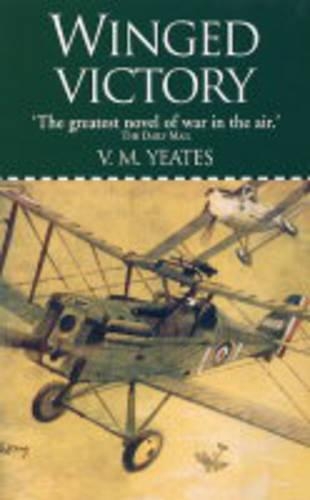
Winged Victory
(Paperback)
Publishing Details
Winged Victory
By (Author) V.M. Yeates
Grub Street Publishing
Grub Street Publishing
30th April 2004
30th April 2004
United Kingdom
Classifications
General
Non Fiction
First World War
Air forces and warfare
940.44941
Physical Properties
Paperback
456
Width 140mm, Height 220mm, Spine 32mm
499g
Description
There is no bitter snarl nor self-pity in this classic novel about the air war of 1914-1918, based very largely on the author's experiences. Combat, loneliness, fatigue, fear, comradeship, women, excitement - all are built into a vigorous and authentic structure by one of the most valiant pilots of the then Royal Flying Corps.World War 1REVIEWS 'Beautifully written with a poet's eye as well as a pilot's eye.' Southern Evening Echo'The only book about flying that isn't flannel.' Anonymous Fighter Pilot'Not only one of the best war books but as a transcription of reality, faithful and sustained in its author's purpose of re-creating the past life he knew, it is unique.' Henry Williamson, author of Tarka the Otter.
Reviews
"'Beautifully written with a poet's eye as well as a pilot's eye.' Southern Evening Echo; 'The only book about flying that isn't flannel.' Anonymous Fighter Pilot, 1941; 'Not only one of the best war books...but as a transcription of reality, faithful and sustained in its author's purpose of re-creating the past life he knew, it is unique.' Henry Williamson, author of Tarka the Otter, written in 1935"
Author Bio
Yeates was born at Dulwich, and educated at Colfe's School where according to Henry Williamson he used to read Keats under the desk during Maths, explored woods, fields and ponds and kept a tame tawny owl/ Yeates joined the Inns of Court Officer Training Corps in 1916 and transferred to the Royal Flying Corps (later the Royal Air Force) in May 1917. Serving with No. 46 Squadron, to which he was posted in February 1918, he flew 248 hours in Sopwith Camels, crashed four times, was shot down twice and scored five victories thereby achieving "ace" status. After the war, he died of tuberculosis in Fairlight Sanatorium at Hastings in 1934. He was survived by his wife Norah Phelps Yeates (ne Richards) and his four children Mary, Joy Elinor (later married hristopher David Vowles), Guy Maslin (later married Binnie Yeates) and Rosalind (later married Edward Cullinan); all of whom had lived with Yeates in a small house in Kent on the Sidcup by-pass of the Dover Road.
